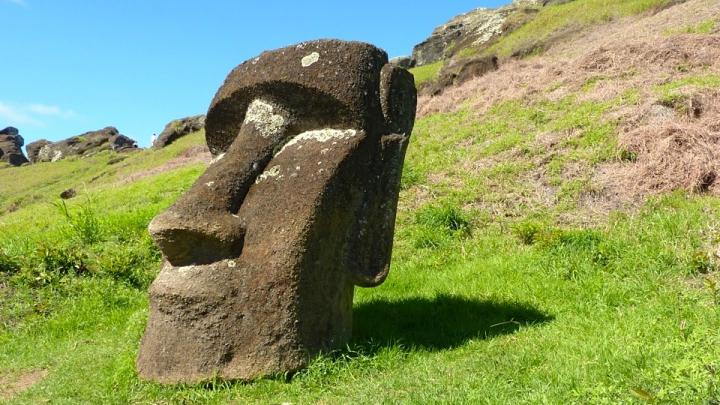Easter Island study disproves popular theory about creation of its famous statues
Population collapse theory seems to be ‘colonial narrative’, scientist says

Your support helps us to tell the story
As your White House correspondent, I ask the tough questions and seek the answers that matter.
Your support enables me to be in the room, pressing for transparency and accountability. Without your contributions, we wouldn't have the resources to challenge those in power.
Your donation makes it possible for us to keep doing this important work, keeping you informed every step of the way to the November election

Andrew Feinberg
White House Correspondent
The widespread deforestation believed to have been caused by the Rapa Nui people to build the towering Easter Island statues did not result in the population’s catastrophic collapse as held by a popular theory, according to a new study.
The “ecocide” or “ecological suicide” theory suggested that the island’s ancient population collapsed as a result of overpopulation and resource mismanagement, including in the construction of the iconic Moai statues.
However, a new study, examining the genomes of 15 Rapa Nui individuals who lived between 1670 and 1950, finds that there is no evidence of any collapse on the island in the 1600s.
Instead, the research, published on Wednesday in the journal Nature, found evidence of resilience among the Rapa Nui population over several centuries until European contact brought “colonial disruptions” on the island after 1722.
“Our genetic analysis shows a stably growing population from the 13th century through to European contact in the 18th century,” study co-author Bárbara Sousa da Mota said.
“This stability is critical because it directly contradicts the idea of a dramatic pre-contact population collapse.”

The Rapa Nui island is located in the Pacific over 1,900km east of the closest inhabited Polynesian island and about 3,700km west of South America.
The story of the island’s collapse has often been presented as a warning tale against humanity’s over-exploitation of resources.
According to this theory, a population of over 15,000 Rapa Nui individuals triggered widespread changes across the island, including deforestation to build the statues, ultimately leading to resource scarcity, famine, warfare and even cannibalism, triggering the population’s collapse.
It suggests that between the 12th to 13th centuries AD, the Rapa Nui people cut down a large number of the island’s native palm trees to either make fields for agriculture or to erect giant statues to honour their clans.
The theory held that these environmental changes reduced the island’s carrying capacity and led to a demographic decline with only a few thousand people remaining to witness the first European boats.
Recent evidence suggests that the island’s deforestation was prolonged, and didn’t result in catastrophic demographic changes.
Researchers now say this “ecocide” theory seems to be part of a “colonial narrative”.
“That is this idea that these supposedly primitive people could not manage their culture or resources and that almost destroyed them. But the genetic evidence shows the opposite,” study first author Víctor Moreno-Mayar said.
“While it is well established that the environment of Rapa Nui was affected by anthropogenic activity, such as deforestation, we did not know if or how these changes led to a population collapse,” Anna-Sapfo Malaspinas, another author of the study, said.
Previous studies have also raised doubts about whether the Rapa Nui made contact with Americans living on the mainland.
These earlier studies looking at small amounts of DNA from ancient Polynesians rejected the possibility of transpacific voyages.
Some also suggest that Polynesian contact with mainland native Americans was mediated by European colonial activity after 1722.

However, the new study found that about ten per cent of the ancient Rapa Nui gene pool had Indigenous American origin.
More importantly, scientists could now infer that both populations met before Europeans arrived on the island, and in the Americas.
Researchers say the ancient Rapa Nui people were more capable of “formidable voyages” across the Pacific than previously thought.
“Many thought that present-day Rapa Nui carry Indigenous American genetic ancestry due to European colonial activity. But instead, the data strongly suggests that Rapa Nui and Indigenous Americans met and admixed centuries before Europeans made it to Rapa Nui or the Americas,” Dr Sousa da Mota said.
“While our study cannot tell us where this contact occurred, this might mean that the Rapanui ancestors reached the Americas before Christopher Columbus,” Anna-Sapfo Malaspinas, another author of the study, said.
Subscribe to Independent Premium to bookmark this article
Want to bookmark your favourite articles and stories to read or reference later? Start your Independent Premium subscription today.
Join our commenting forum
Join thought-provoking conversations, follow other Independent readers and see their replies
Comments